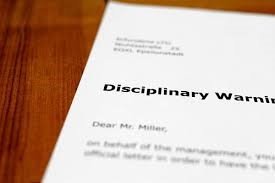Written Warnings

Giving an employee a written warning is a delicate process that requires careful planning and execution. Follow these steps to provide a fair and effective written warning:
1. Gather Relevant Information: Collect all relevant facts and evidence related to the employee’s performance or conduct issue. This may include performance evaluations, attendance records, customer complaints, or any other documented incidents.
2. Review Company Policies and Procedures: Ensure that the employee’s behavior or performance issue is a violation of company policies or performance expectations. Be clear about the specific policy or standard that the employee has not met.
3. Verify with UAP: Call UAP to ensure your company’s policy has been broken, and for assistance in the wording of the document.
4. Choose the Right Time and Place: Schedule a private meeting with the employee to discuss the issue. Choose a neutral and confidential setting where you can have an uninterrupted conversation.
5. Remain Objective: Stay objective and focused on the facts during the meeting. Avoid personal judgments or emotions and stick to the documented performance or behavior concerns.
6. Be Specific and Clear: Clearly outline the reasons for the written warning. Explain what performance or behavior is not meeting expectations and how it impacts the team or company.
7. Discuss Expectations: Clearly communicate the expectations moving forward and the improvements you expect from the employee. Be specific about the timeline for improvement and any support or resources available.
8. Allow Employee Input: Give the employee an opportunity to provide their perspective during the meeting. Listen to their side of the story and consider any valid explanations they offer.
9. Document the Warning: Provide the employee with a written warning that includes details of the discussion, the issue, the expected improvements, and the consequences if the problem persists. You should use UAP’s form, and UAP’s wording from your consultation.
10. Employee Acknowledgment: Ask the employee to acknowledge receipt of the written warning by signing and dating the document. This indicates they have read and understood the content. If they won’t sign, have them sign at the bottom that they disagree and let them write their side of the story on the reverse side.
11. Offer Support: Offer support and resources to help the employee meet the expectations outlined in the written warning. This may include additional training, mentoring, or coaching.
12. Follow-Up: Schedule a follow-up meeting to discuss the employee’s progress and address any questions or concerns they may have. This reinforces your commitment to their success and improvement.
13. Maintain Confidentiality: Keep the written warning and the details of the conversation confidential, sharing the information only with those directly involved in addressing the issue.
14. Send a copy of the write-up to UAP: Keep a copy of the write-up in your files, but also send a copy of the write-up to UAP for their records.
Remember, the goal of a written warning is to provide constructive feedback and an opportunity for improvement. Treat the employee with respect and empathy, and make it clear that your intention is to help them succeed. If the employee shows significant improvement and meets expectations after the written warning, document this progress and recognize their efforts. On the other hand, if the issue persists, follow your company’s progressive discipline process as necessary. If you have questions about this procedure or need your handbook updated to clarify your policies, call UAP for assistance.


